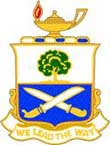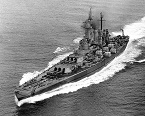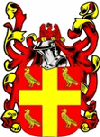Local Yokel
Posts: 1494
Joined: 2/4/2007
From: Somerset, U.K.
Status: offline

|
quote:
ORIGINAL: jwilkerson
quote:
ORIGINAL: John 3rd
I REALLY want to read Willmott's stuff!
Have gotten about 1/3 of the way through The First Team and LOVE the detail! Have laready learned all sorts of interesting tidbits regarding the CV Operations and issues that the Americans were dealing with in the first few months of the war. It led me to post in the AE Naval Thread! Good stuff to say the least...
What are people's opinion of the Japanese Merchant Marine history by Dr....I CANNOT think of his name?!!  He is at Kansas State. He was to be my advisor for my Ph. D. Program there and I am drawing a complete blank... He is at Kansas State. He was to be my advisor for my Ph. D. Program there and I am drawing a complete blank...
<<<EDIT>>>
Mark Parillo! Cannot believe that I forgot his name. Had to hop on the K-State website. How good is his book?
Willmott (the 2 volume series) is good, definitely worth having, but don't set your expectations too high, the second volume, which mostly covers Coral Sea and Midway, is good, but not at the level of detail you will see in newer works like Lundstrom.
Parillo's work was a bit of a disappointment for me. I guess I had my expectations set too high. Not much detail. I was hoping for lists of ships and details about classes, etc. Instead we mostly have a narrative about the business, economic and political decisions that led to the Japanese having the merchant marine that it had.
But, I guess it is all about expections. Set your expectations nice and low and maybe you won't be disappointed!

If you want ship class details and the like then Parillo's book is not for you - instead you might try the CD-ROM version of ONI-208J: the USN recognition manual on Japanese merchantmen.
I thought jwilkerson's assessment of Parillo's book was a bit harsh. Actually there's quite a lot of hard stats, graphs etc in it, and if you have any interest in Japanese logistics then it will repay study, if only because (to my knowledge) there are no other works that tackle the subject.
Even so, I too was disappointed. Parillo breaks down his subject matter into chapters that deal with facets of the problems the Japanese faced, and the chapter headings give a clue to his approach: "Managing the Resource", "The Other 'Silent Service'" (escorts), "Rumbling Down the Ways" (shipbuilding), "The Floating Peril" (mines) - and so forth. But I would have preferred a chronological treatment of the subject; it would have better put into context the shortcomings in what the Japanese did and did not do.
I began reading Parillo with the expectation of finding that the Japanese, as a maritime nation, had moved heaven and earth to mitigate the attack upon their seaborne lines of communication. At the end of the book I was left feeling "Was that the best they could do? They could have done so much more!" So in reality my sense of dissatisfaction was prompted not so much by the author's approach as by the failures he describes.
_____________________________

|
 Printable Version
Printable Version


 )
)














 He is at Kansas State. He was to be my advisor for my Ph. D. Program there and I am drawing a complete blank...
He is at Kansas State. He was to be my advisor for my Ph. D. Program there and I am drawing a complete blank... 





 New Messages
New Messages No New Messages
No New Messages Hot Topic w/ New Messages
Hot Topic w/ New Messages Hot Topic w/o New Messages
Hot Topic w/o New Messages Locked w/ New Messages
Locked w/ New Messages Locked w/o New Messages
Locked w/o New Messages Post New Thread
Post New Thread